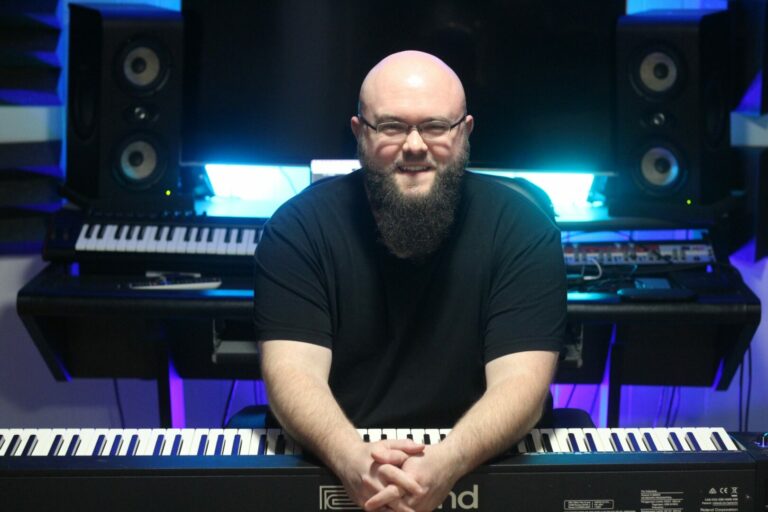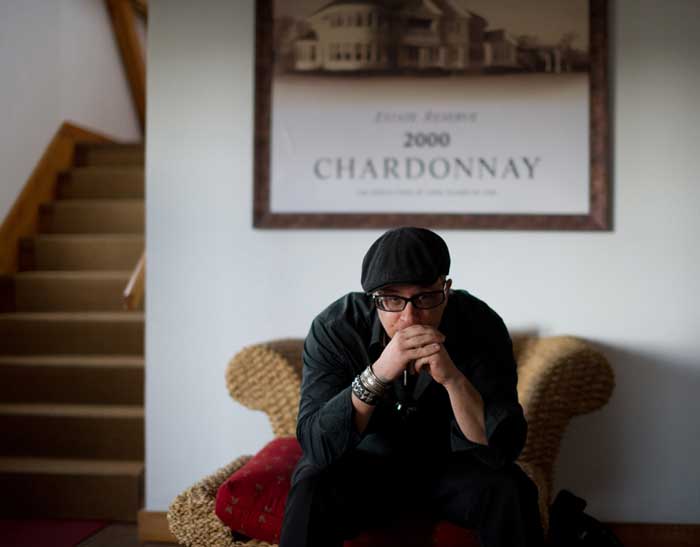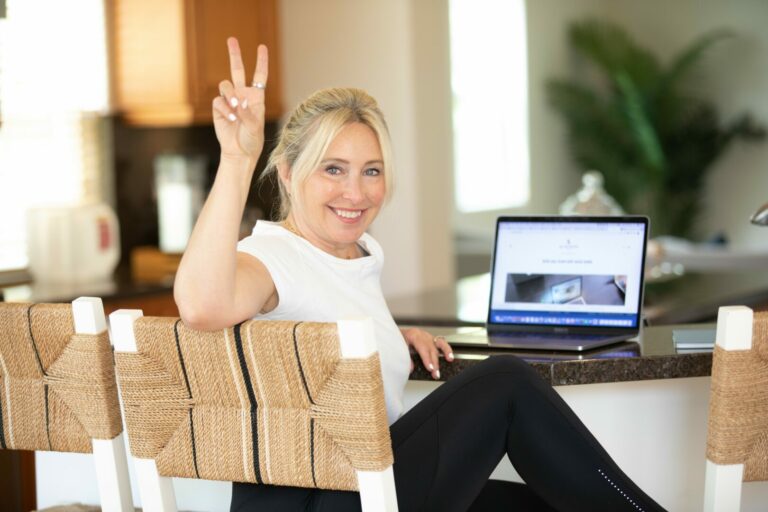We caught up with the brilliant and insightful Phillip Gladkov a few weeks ago and have shared our conversation below.
Phillip , so excited to have you with us today. So much we can chat about, but one of the questions we are most interested in is how you have managed to keep your creativity alive.
In today’s world, creativity has never been more accessible. With high-quality cameras in our pockets and countless free programs available for everything from drawing to video editing, we have more resources than ever to bring our ideas to life. And yet, even with all these resources at our disposal, it can still feel incredibly hard to finish that project you started or find the motivation to dive into the next one.
Whether it’s burnout, a sense of “why does this even matter?”, or a mix of both, I see many creatives struggling to keep their spark alive under the weight of modern pressures.
For those of us who’ve chosen creative careers, there’s also the challenge of balancing work and personal projects. When your creative energy is constantly being tapped for work, it can be difficult to find the space and motivation to pursue your own passion projects. And if you’re anything like me, not working on those personal projects eventually starts to feel like a hole. Over time, this absence can turn into resentment—toward life, toward work, or just the day-to-day interruptions that get in the way of what we love most. Add to that the constant pressures from social media, the demands of capitalism, and our own internal expectations, and it becomes easy to see how creativity can get suffocated.
But despite all of this, I’ve found a few things that help me keep my creativity alive. The most important? PLAY.
I’m methodical by nature. Most of my projects require planning, storyboarding, and organizing. There are plenty of technical aspects too, which can feel creatively fulfilling at times but also routine. That’s why I make it a point to play outside of my structured work—without a goal or outcome. I find time to be creative for creativity’s sake, and that’s when I reconnect with the pure joy of it.
Here are a few ways I incorporate play:
– Using quick-drying clay and seeing what my subconscious creates.
– Picking three random colors and doodling without a plan.
– Learning a new medium completely unrelated to my usual practice.
– Recently, my partner suggested getting building blocks, and it’s been a surprisingly fun way to let my mind wander.
The key is to detach creative play from the expectations that come with being a “creative.” When you can cultivate a healthy relationship with play, it becomes easier to bring that energy back into your more structured creative work. And it’s not just for artists—play is important for anyone, no matter how “creative” they consider themselves.
In addition to play, here are a few other things that help me keep my creative practice alive:
– Building a supportive creative community—even if it’s just one or two people to share work-in-progress projects with, bounce ideas off, or troubleshoot together. This provides accountability, encouragement, and can make the whole process feel less isolating.
– Romanticizing your creative space—make it feel sacred, however that looks for you. Whether it’s lighting a candle, making a cup of tea, or going to a favorite café or library, creating rituals around your practice can make it feel special and help reframe it as something to look forward to, rather than a task weighed down by external pressures.
– Consuming art that deeply inspires you—we all know the feeling after leaving the movie theater, closing a book, or walking away from piece of art that leaves us buzzing with ideas. It’s so important to seek those experiences out when your creative fire feels like it’s dimming. Inspiration often comes from seeing what other people have made.
None of these ideas are particularly groundbreaking, but sometimes the best solutions aren’t. They’re just reminders of the simple, powerful things that help us return to our creative core when the fire feels more like an ember.
A close friend once told me something that’s stuck with me: There’s so little in life we actually have control over, but as creatives, we build these little worlds where we do have control—where we can create whatever wonders we choose. So why would we ever let that go?


Great, so let’s take a few minutes and cover your story. What should folks know about you and what you do?
Well… I do a lot of different things, but let me try to condense as best as I can. I am a multidisciplinary artist, filmmaker, animator, musician, and amateur mycologist, with over a decade of experience in film and video, and a lifetime spent exploring art and design. My work is often impact-driven, rooted in a deep care for both humanity and the environment. In addition to filmmaking, I’m particularly passionate about mycology and ecology, which frequently influence my artistic practice.
For the last eight years, I’ve been working with the uncommon medium of birch bark, using it to create medium-to-large collages on wood panels. This organic material allows me to tell ecological and cultural stories in a very unique way. My passions for film and nature recently came together in my latest stop-motion animation, “Story of the Sun” (2024), which is created entirely out of birch bark. This contemporary creation myth tells the story of how the first humans discovered fire, changing the world forever. It’s a tale that explores curiosity, greed, environmental destruction, and the human condition.
Story of the Sun is designed for both children and adults, blending humor, valuable lessons, and emotionally resonant moments. What makes it particularly meaningful is that it’s made from birch bark—a material that has been used to start fires since the Neanderthal era. I’m incredibly excited to share this project with the world, and it’s currently screening at festivals worldwide.
Additionally, I’m working on a picture-book adaptation of “Story of the Sun”, which I hope to release next year, so stay tuned!


Looking back, what do you think were the three qualities, skills, or areas of knowledge that were most impactful in your journey? What advice do you have for folks who are early in their journey in terms of how they can best develop or improve on these?
Throughout my journey, three core qualities have been instrumental to my growth: learning on my own accord, believing in myself, and finding meaning in it all. These aren’t just abstract ideas; they’re principles that have shaped both my personal and professional life, especially in the ever-changing world of video/media. Let me explain how these have impacted me and how others can develop them in their own lives.
1. Learning on My Own Accord
In both our careers and personal lives, change is the only constant. The field of video and media has evolved drastically, and to survive in such a shifting landscape, I’ve had to become a self-driven learner. This ability to teach myself new skills has enabled me to adapt and thrive, often in areas where I didn’t initially have formal experience.
For example, when I shot my first feature film, “5”, at 23, I knew I needed to be flexible and resourceful. Shooting it over several years meant finding a full-time cinematographer on a tight budget wasn’t feasible, so I learned to operate multiple camera systems myself, navigate shooting in different weather conditions, choose the right lenses, and even operate a drone. These skills not only allowed me to complete the film but also became valuable tools I’ve carried with me ever since.
Similarly, when I embarked on creating the world’s first stop-motion animation made entirely from birch bark, I had no idea how to achieve what I envisioned. But I dove into learning—watching endless YouTube tutorials, asking for help in online forums, and experimenting until I figured it out. The result was my first animated film, “Story of the Sun”, and an unexpected love for animation.
Advice for others: Don’t let a lack of knowledge stop you. We live in a time where learning resources are more accessible than ever. Take advantage of platforms like YouTube, LinkedIn Learning (which many libraries offer for free), Reddit, and Discord forums. Embrace learning as a lifelong journey and trust that each new skill you acquire adds to your toolkit for the future.
2. Believing in Myself
Rejection is inevitable, especially in creative fields. Over the years, I’ve faced countless rejections and difficult life events that, at times, made me question the value of my work. It’s easy to spiral into self-doubt, wondering if anyone cares about your art or if it’s good enough. But I’ve learned that rejection doesn’t define my worth.
One of the most critical shifts for me has been separating my self-worth from outside validation. Whether it’s a rejection letter or a missed opportunity, it’s not always a reflection of your talent or potential. Often, there are other factors at play—right project, wrong time; lack of experience; or even just plain old nepotism. Sulking over these missed chances wastes valuable energy that could be better spent on creating or improving.
Advice for others: Believe in the process, not just the outcome. Learn to love your work for what it is at every stage. Find a supportive community to share your work with—people who see and appreciate your voice. Also, create some things just for yourself, without worrying about external judgment. And most importantly, find self-worth beyond your work. Remember, we’re all just little fragile fleshy creatures on this big spinning rock, floating in a vacuum of space—be gentle with yourself.
3. Finding Meaning in It All
Being a human is tough, and being an artist in a hyper-capitalistic society can make it even harder. There are days I question my purpose—why am I making films and art when the world feels like it’s burning? But when I step back, I realize that art has the power to shape worldviews, inspire change, and heal. Some of the films I’ve seen have changed the course of my life, and that’s what I aim to do for others.
At the core, I’ve found meaning in using my skills to create work that is authentic to who I am and contributes, even in small ways, to bettering the world. This sense of purpose grounds me, even when doubt creeps in.
Advice for others: Whether you’re an artist or not, it’s essential to find meaning in what you do. Ask yourself: Why do I create? What drives me? These answers might evolve over time, but they serve as a compass, guiding you through life’s uncertainties. Without a sense of purpose, it’s easy to feel lost—so take the time to reflect on what truly matters to you.
Conclusion:
These three qualities—continual learning, self-belief, and finding meaning—have been pivotal in my journey. For anyone starting their own path, these aren’t just skills to develop but mindsets that can carry you through the inevitable ups and downs. Embrace change, trust in yourself, and always strive to find deeper meaning in the work you do.


One of our goals is to help like-minded folks with similar goals connect and so before we go we want to ask if you are looking to partner or collab with others – and if so, what would make the ideal collaborator or partner?
I’m always looking for folks to collaborate with. If you care about people, the environment, healing ourselves and our planet together, and changing hearts and minds, then I think we’d be a great fit. There are so many people doing amazing work in fields like ecology, psychology, sociology, social justice, engineering, and more. A lot of this important work gets published in scientific journals or remains hidden from the public eye. I’d love to use my creative and storytelling skills to communicate these stories in an accessible, engaging, and creative way, so they can reach and inspire a wider audience.
There’s already so much news and content focused on the doom and gloom in our world today, and while that’s valid, it’s equally important to highlight the incredible work people are doing to create a better world. Their efforts need to be uplifted and shared, and that’s exactly what I aim to do.
Whether you’re an individual, an organization, or even a mycelial network connecting a forest through an intricate root system, you can contact me via my website or social media. Even if you don’t have anything specific you’re working on right now but just want to connect, please reach out—you never know what the future may hold.
Contact Info:
- Website: https://phillipgladkov.com/index.html
- Instagram: https://www.instagram.com/phillipgladkov/
- Linkedin: https://linkedin.com/in/phillip-gladkov-83488a10b
- Youtube: https://www.youtube.com/@phillipgladkov
- Other: https://storyofthesun.com/


Image Credits
Phillip Gladkov, Robert Tapaltsyan
so if you or someone you know deserves recognition please let us know here.




